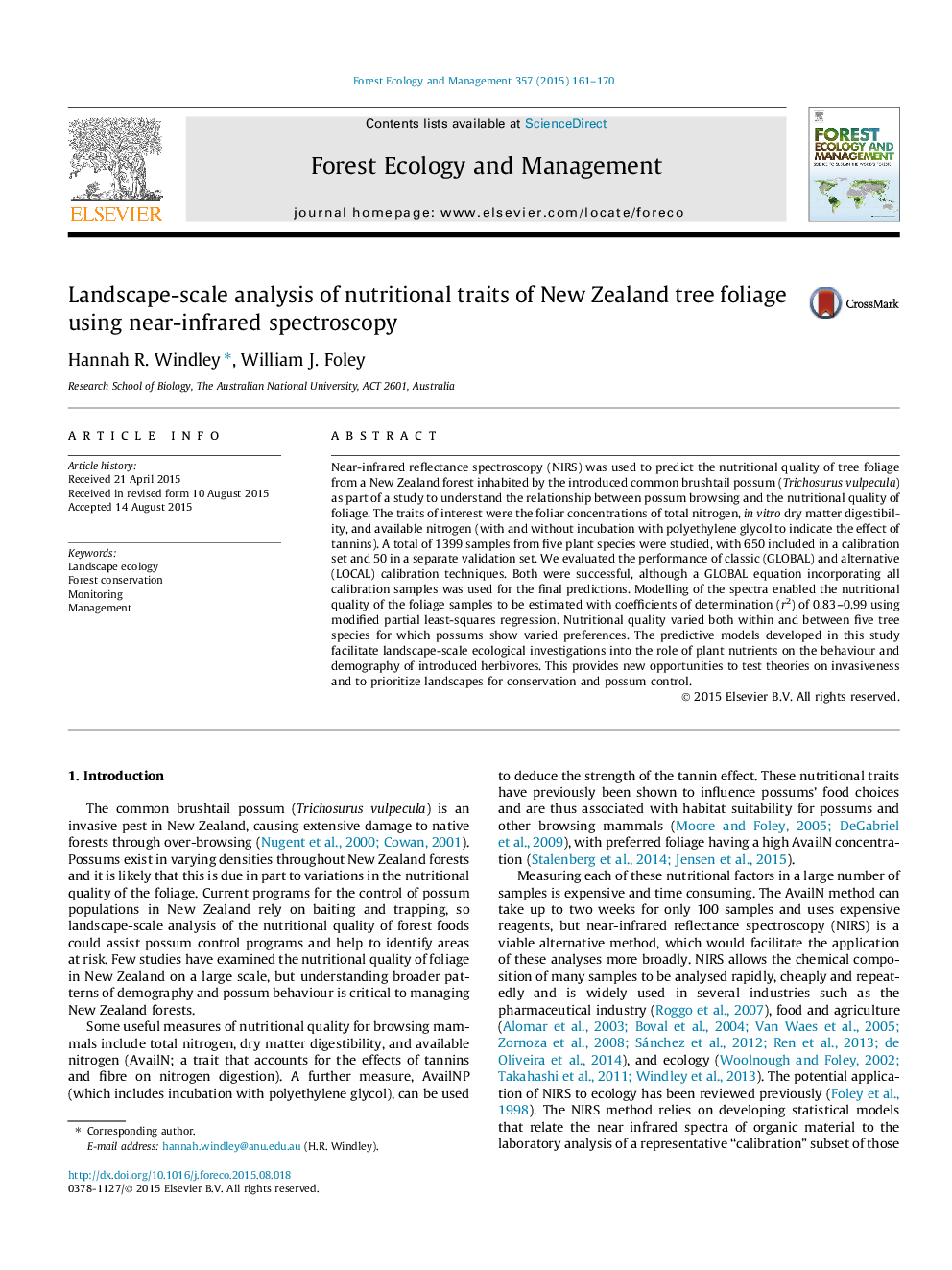| Article ID | Journal | Published Year | Pages | File Type |
|---|---|---|---|---|
| 6542713 | Forest Ecology and Management | 2015 | 10 Pages |
Abstract
Near-infrared reflectance spectroscopy (NIRS) was used to predict the nutritional quality of tree foliage from a New Zealand forest inhabited by the introduced common brushtail possum (Trichosurus vulpecula) as part of a study to understand the relationship between possum browsing and the nutritional quality of foliage. The traits of interest were the foliar concentrations of total nitrogen, in vitro dry matter digestibility, and available nitrogen (with and without incubation with polyethylene glycol to indicate the effect of tannins). A total of 1399 samples from five plant species were studied, with 650 included in a calibration set and 50 in a separate validation set. We evaluated the performance of classic (GLOBAL) and alternative (LOCAL) calibration techniques. Both were successful, although a GLOBAL equation incorporating all calibration samples was used for the final predictions. Modelling of the spectra enabled the nutritional quality of the foliage samples to be estimated with coefficients of determination (r2) of 0.83-0.99 using modified partial least-squares regression. Nutritional quality varied both within and between five tree species for which possums show varied preferences. The predictive models developed in this study facilitate landscape-scale ecological investigations into the role of plant nutrients on the behaviour and demography of introduced herbivores. This provides new opportunities to test theories on invasiveness and to prioritize landscapes for conservation and possum control.
Related Topics
Life Sciences
Agricultural and Biological Sciences
Ecology, Evolution, Behavior and Systematics
Authors
Hannah R. Windley, William J. Foley,
